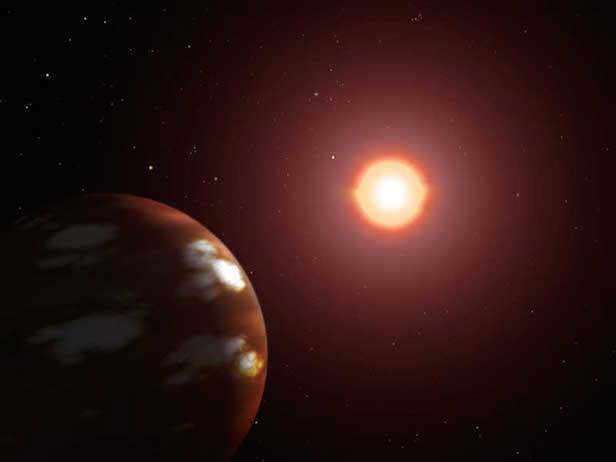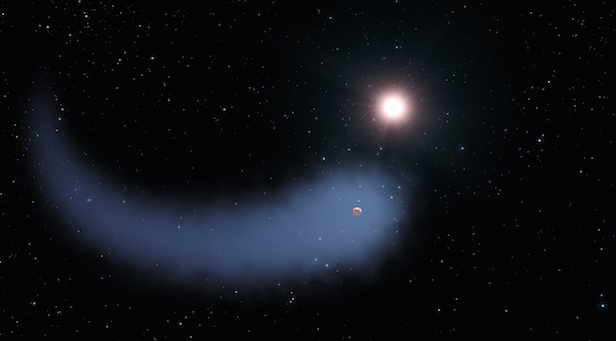Comet-like exoplanet found to orbit its star’s poles
The Neptune-sized planet is caught up in an irregular orbit around a red dwarf star

The orbit of the exoplanet can tell us about its formation and evolution. Image credit: NASA
An international team of astronomers led by the University of Geneva (UNIGE), Switzerland have discovered that the Neptune-sized exoplanet – a planet beyond our Solar System – GJ 436b has a highly irregular elliptical orbit around its host red dwarf star. GJ 436b, also known as the ‘the comet-like exoplanet’ due to it casting a tail of hydrogen, appears to have an elliptical orbit around the star’s poles.
The commonly accepted ‘regular’ appearance of a solar system is all the planets orbiting the host star on the same plane, which is also the equatorial plane of the star. The spin of the star also aligns with the spin axes of the planetary orbits, giving the impression of a well-ordered system. However, the universe is extremely fickle, and ever changing. The team of researchers discovered that this particular planetary system is instead turned upside down.
GJ 436 is a system that has been the subject to many studies, one of which led to the discovery of GJ 436b, the exoplanet that evaporates like a comet. Now, researchers have shown that the exoplanet also has a very special orbit. The planet doesn’t travel around the star’s equatorial plane like our own Solar System, but instead passes over the star’s poles, which is also known as a ‘polar’ orbit.

The close orbit of GJ 436b means material is evaporating off the planet. Image credit: NASA.ESA/STScl
The tilt of GJ 436b’s orbit is four-times that of Earth’s, and this is an aspect that has baffled astronomers for a decade. Contrasting to the planets in our Solar System, which orbit in almost-perfect circles, this comet-like exoplanet exhibits a very elliptical orbit. This means that the distance between the planet and star changes frequently.
“This planet is under enormous tidal forces because it is incredibly close to its star, barely three per cent of the Earth-Sun distance,” explains Vincent Bourrier, researcher at the Department of Astronomy of the UNIGE Faculty of Science. “The star is a red dwarf whose lifespan is very long; the tidal forces it induces should have since circularised the orbit of the planet, but this is not the case!”
This discovery means that we can try to understand the nature of how planetary systems form and evolve. For instance, a planet that is disturbed by the gravitational force of another planet within the system, or even a nearby star, can affect the planet’s orbit. “Even if we have already seen misaligned planetary orbits, we do not necessarily understand their origin, especially since here it is the first time we measure the architecture of a planetary system around a red dwarf,” adds Christophe Lovis, a UNIGE researcher.
The presence of an unknown, massive object would explain why GJ 436b’s orbit is not circular. “If that is true, then our calculations indicate that not only would the planet not move along a circle around the star, as we’ve known for ten years, but it should also be on a highly inclined orbit. That’s exactly what we just measured!” says Hervé Beust, who did the orbital calculations.
These calculations also predict that the planet was much further out too, but then moved closer to the star in recent cosmic times. This would mean that the planet wouldn’t have always been evaporating, instead this would have occurred when it was nudged towards to the star by the unknown companion. “Our next goal is to identify the mysterious planet that has upset this planetary system,” concludes Bourrier.
Keep up to date with the latest reviews in All About Space – available every month for just £4.99. Alternatively you can subscribe here and make the most of our Christmas offer for a fraction of the price!




